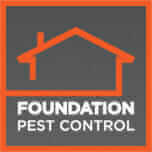Invasive Insect Species In Tennessee Part 2
Beware Of These Invasive Insect Species That Are Coming To Tennessee
With its unique climate, rich open land and buzzing metropolises, Tennessee is a prime habitat for many different types of insects and pests. By knowing what’s buzzing in your backyard, you’ll be better able to determine treatment next steps, and help curb issues before they become full-scale infestations.
Common insects to watch for…
FALSE CODLING MOTH
Common to area fruit trees and field crops, the False Codling Moth originated in sub-Sahara Africa and, now, can be found in many warmer climates. Infestations tend to happen every other year. Citrus plants are particularly susceptible—eggs are often laid on the surface of fruit, and they can quickly burrow into the rind, discoloring the fruit and increasing the likelihood of disease and mold.
LEEK MOTH
METALLIC BEETLE
OAK AMBROSIA BEETLE
PEAR LEAF BLISTER MOTH
PINE SHOOT BEETLE
Brown or black and approximately 3 to 5 mm long, Pine Shoot Beetles tend to attack pine trees, stunting their growth and breaking through bark during breeding periods. Common to Christmas tree farms but able to feed on any pine, infestations have been so bad in neighboring states that full-on quarantines have been issued, with experts monitoring the spread year over year.
Check out part one of invasive insect species.
Don’t put your home or family at risk. Get in touch with Foundation Pest Control to discuss your termite treatment options. We’ll help you find the most economical and effective solution for your situation.
Share This Article

